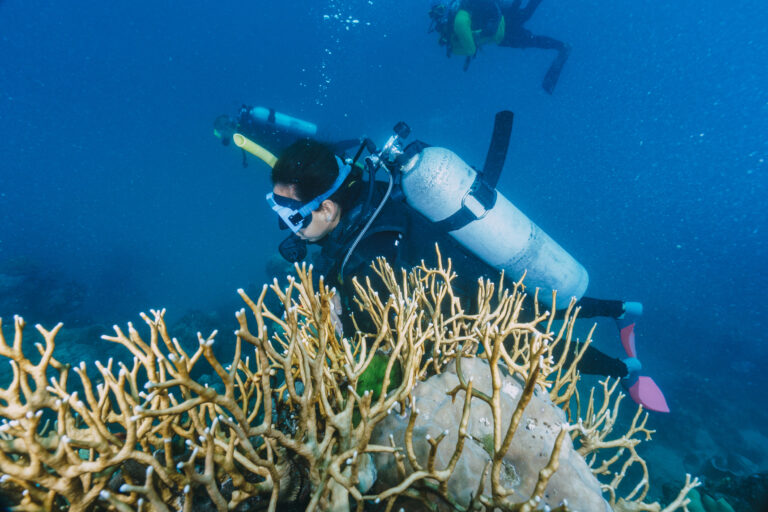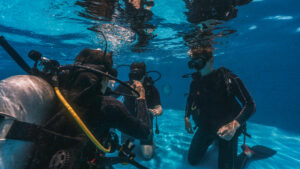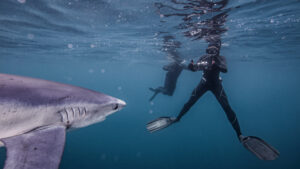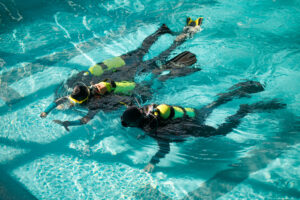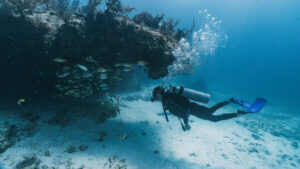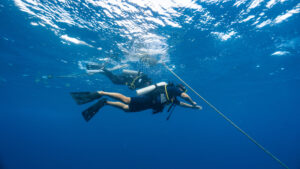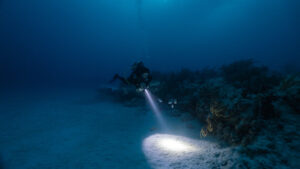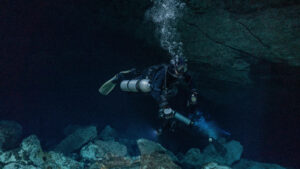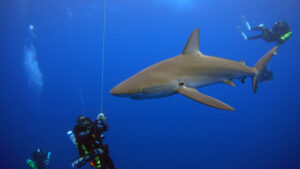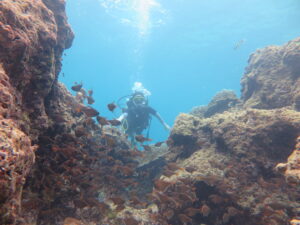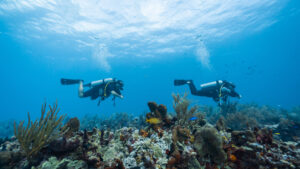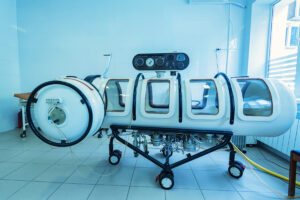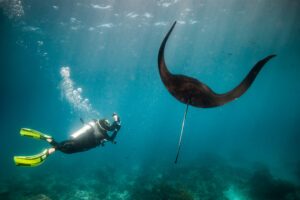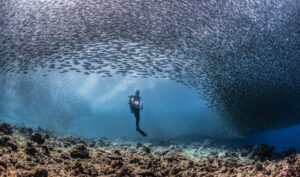What is Thermocline when Diving?
A thermocline is a naturally occurring phenomenon in bodies of water, where two layers of water with distinct temperature differences meet. For scuba divers, understanding and navigating through thermoclines is essential for a safe and enjoyable diving experience. This entry will discuss the science behind thermoclines, their impact on marine life, and their importance for scuba divers.
Definition and Formation
A thermocline is an intersection or transition zone between two layers of water with different temperatures. The colder layer is usually deeper, while the warmer layer sits on top. This separation occurs due to the differing densities of the water, with cold water being denser and heavier than warm water. The thermocline can be found in oceans, lakes, and other large bodies of water, and its depth and thickness can vary depending on the location, season, and other factors.
In the ocean, thermoclines can be influenced by factors such as sunlight, wind, and water currents. In warmer months, sunlight heats the surface layer, causing it to expand and become less dense. This creates a distinct separation between the warm surface layer and the colder, denser water below. Similarly, in lakes, the seasonal warming and cooling of surface waters can result in the formation of thermoclines.
Types of Thermoclines
There are two primary types of thermoclines: permanent and seasonal. Permanent thermoclines are found in large, deep bodies of water, like the open ocean. They are caused by a constant influx of cold water from melting ice or upwelling, which maintains the separation between the cold, deep layer and the warmer surface layer.
Seasonal thermoclines, on the other hand, are temporary and occur in response to seasonal temperature fluctuations. They are more commonly found in shallow, enclosed bodies of water, such as lakes and coastal areas. In these regions, thermoclines may form during the warm months and dissipate as the surface water cools and mixes with the deeper layers during the cold months.
Impact on Marine Life
Thermoclines have a significant impact on marine life, as they create distinct habitats with different temperatures, nutrient levels, and light conditions. Many species of fish and other marine organisms have adapted to specific temperature ranges, and the presence of a thermocline can provide a natural barrier between these habitats.
The boundary created by the thermocline often results in a higher concentration of nutrients and plankton, attracting various species to feed in these areas. This can lead to a higher density of marine life near the thermocline, creating a unique and diverse ecosystem for divers to explore.
Importance for Scuba Divers
For scuba divers, understanding and being prepared for thermoclines is crucial. A sudden change in water temperature can affect the buoyancy of a diver, as well as their comfort and overall dive experience. Divers should be aware that entering a thermocline can cause a rapid drop in temperature, which can lead to chills or even hypothermia if they are not adequately insulated with the appropriate wetsuit or drysuit.
Divers should also be prepared for changes in visibility when crossing a thermocline. The temperature difference between the two layers can cause light refraction and scattering, which can result in reduced visibility, a phenomenon known as “shimmer” or “mirage effect.” This may make it challenging to navigate underwater and potentially disorienting, especially for inexperienced divers.
Navigating Thermoclines
Scuba divers should be aware of the presence of thermoclines and take necessary precautions when planning their dive. When planning a dive, consult local dive shops or experienced divers to gather information about the depth and temperature of thermoclines in the area. Additionally, divers should be prepared to adjust their buoyancy control as they pass through thermoclines, as the change in water density can affect their buoyancy.
When diving in areas with known thermoclines, it is essential to monitor depth and temperature closely. Divers should carry a dive computer or a depth gauge and a thermometer to help them identify and navigate thermoclines. Be prepared to adjust your dive plan accordingly, as thermoclines can impact the time you spend at certain depths and the amount of thermal protection required.
Safety Precautions
To ensure a safe and enjoyable dive in areas with thermoclines, divers should take the following safety precautions:
Thermal protection
Wear appropriate thermal protection, such as wetsuits or drysuits, to account for the temperature changes encountered during the dive. Choose a wetsuit thickness based on the coldest water temperature you may experience, especially if diving through a thermocline.
Buoyancy control
Practice proper buoyancy control techniques and be prepared to make adjustments as you pass through thermoclines. This may involve adding or releasing air from your buoyancy control device (BCD) to maintain a neutral buoyancy.
Dive planning
Research the local dive site to understand the presence and depth of thermoclines. Adjust your dive plan to account for temperature changes and visibility issues that may arise while crossing a thermocline.
Dive buddy communication
Ensure clear communication with your dive buddy about the presence of thermoclines, and have a plan in place for navigating through them. Use hand signals to communicate any changes in buoyancy or discomfort experienced while diving through thermoclines.
Monitor depth and temperature
Regularly check your dive computer, depth gauge, and thermometer to stay aware of your depth and the water temperature. This will help you identify thermoclines and adjust your dive plan accordingly.
Key Takeaways
Thermoclines are a fascinating natural phenomenon that offers scuba divers a unique underwater experience. By understanding the science behind thermoclines and their impact on marine life, divers can better prepare for the challenges they may encounter when navigating through these temperature boundaries. With proper planning, thermal protection, and buoyancy control, divers can safely explore and appreciate the diverse ecosystems created by thermoclines.

